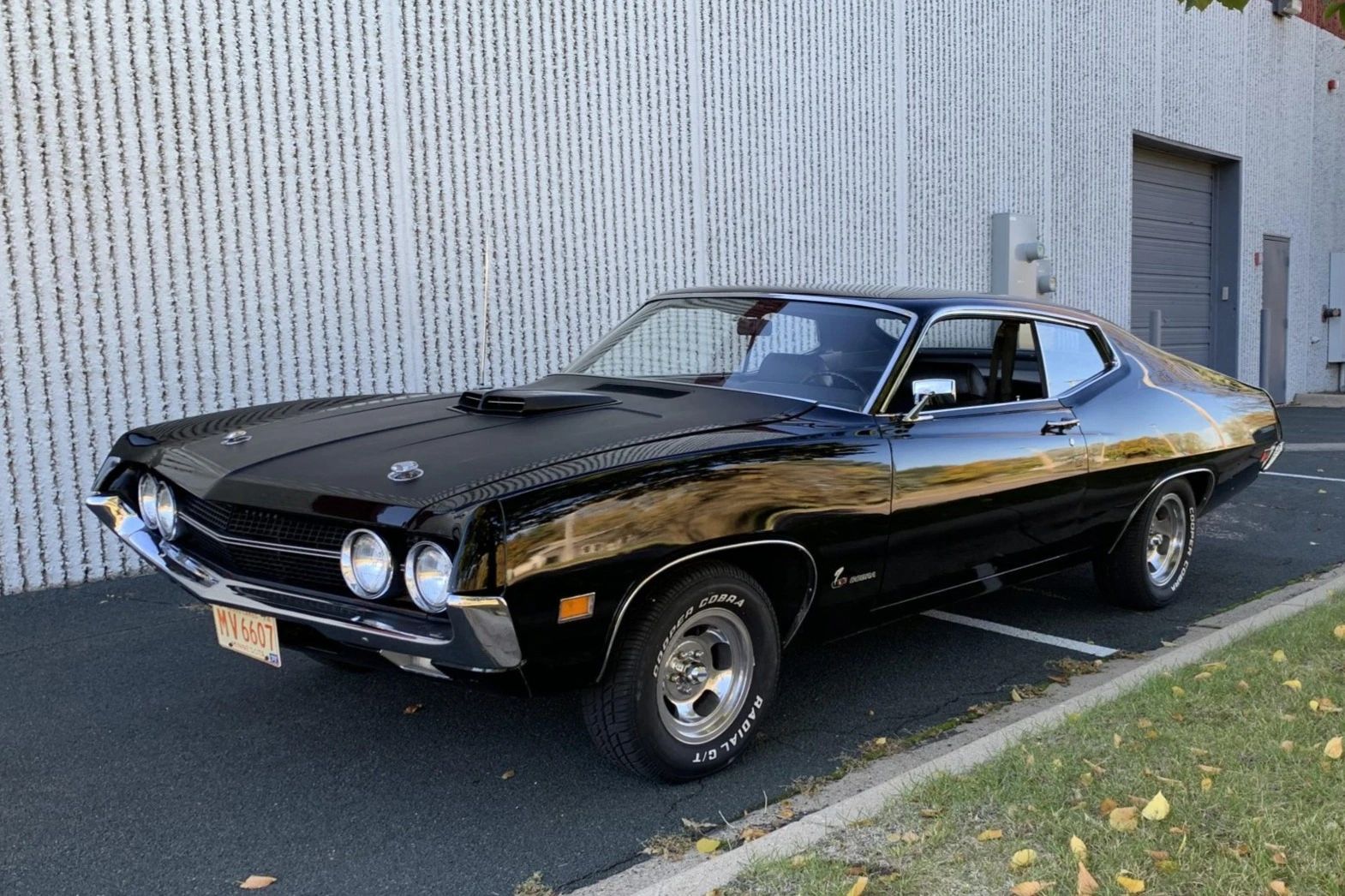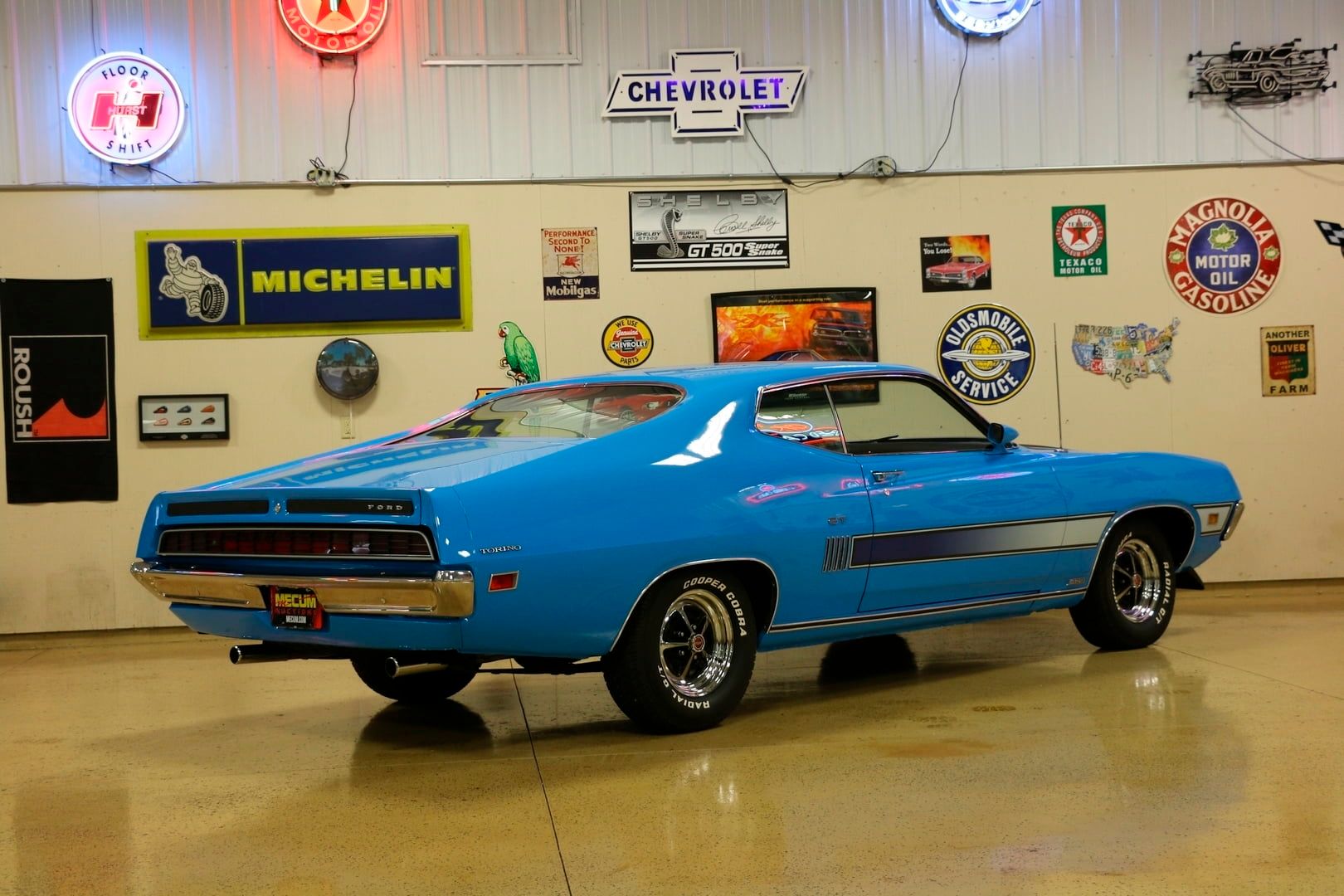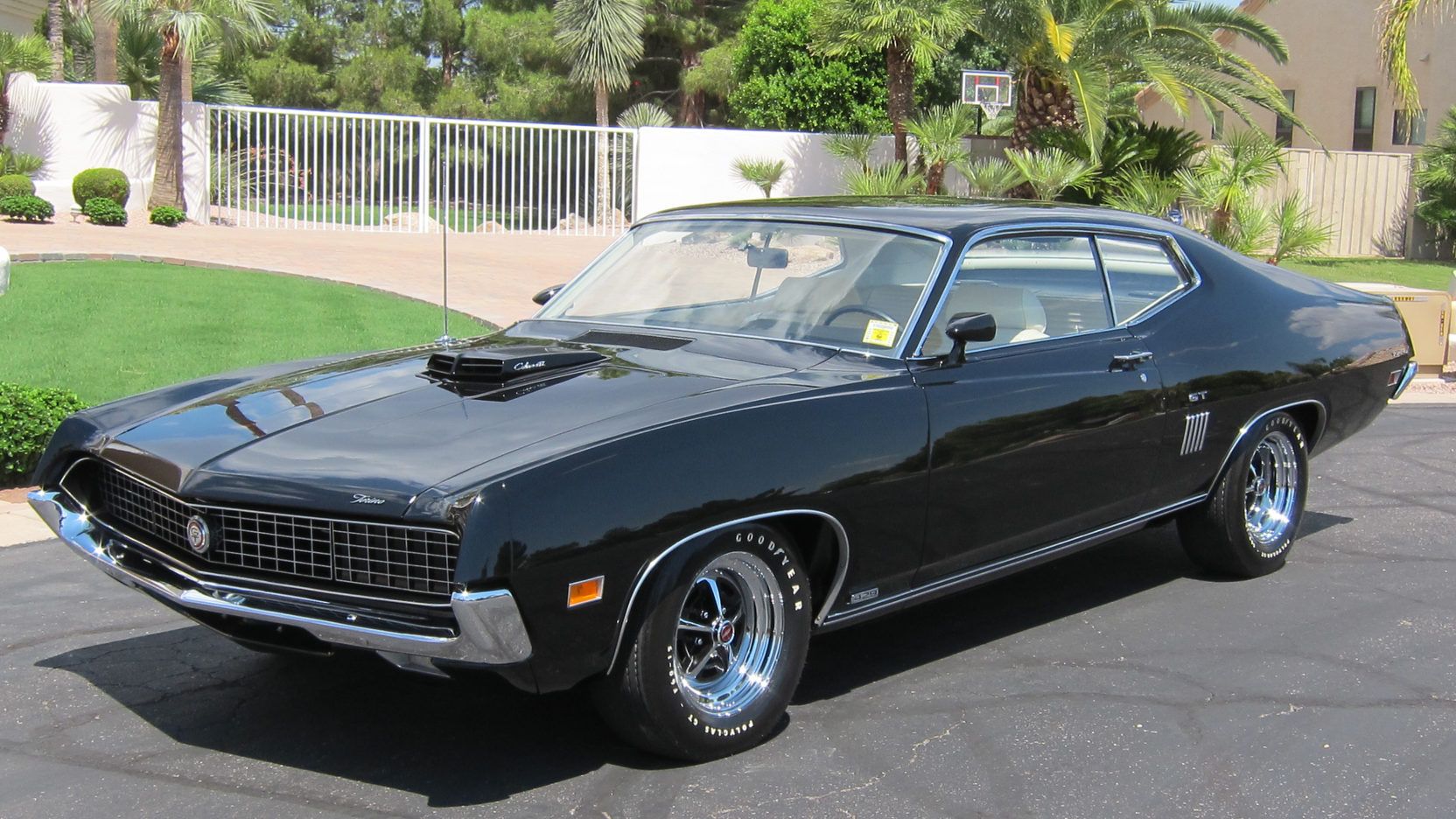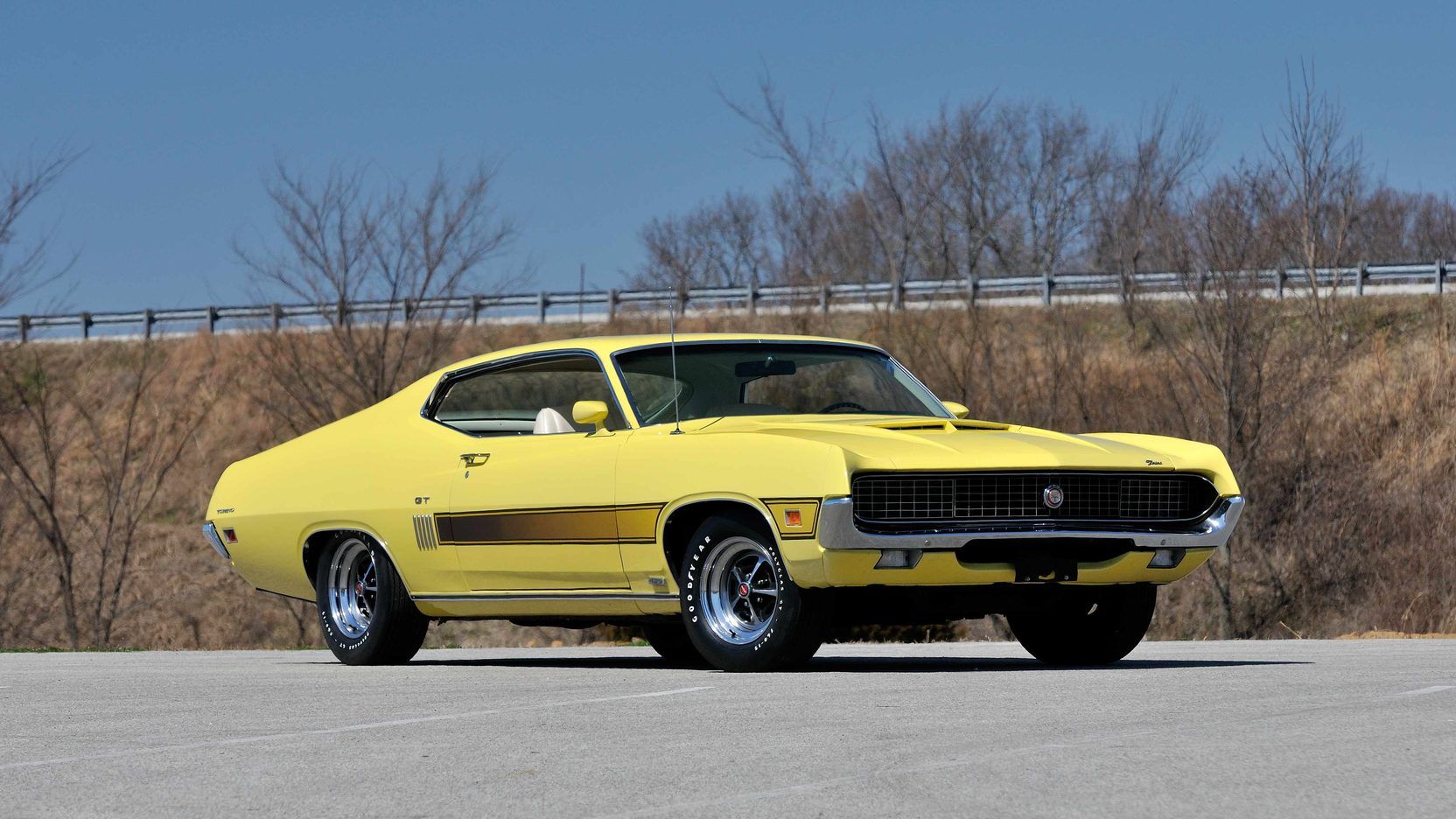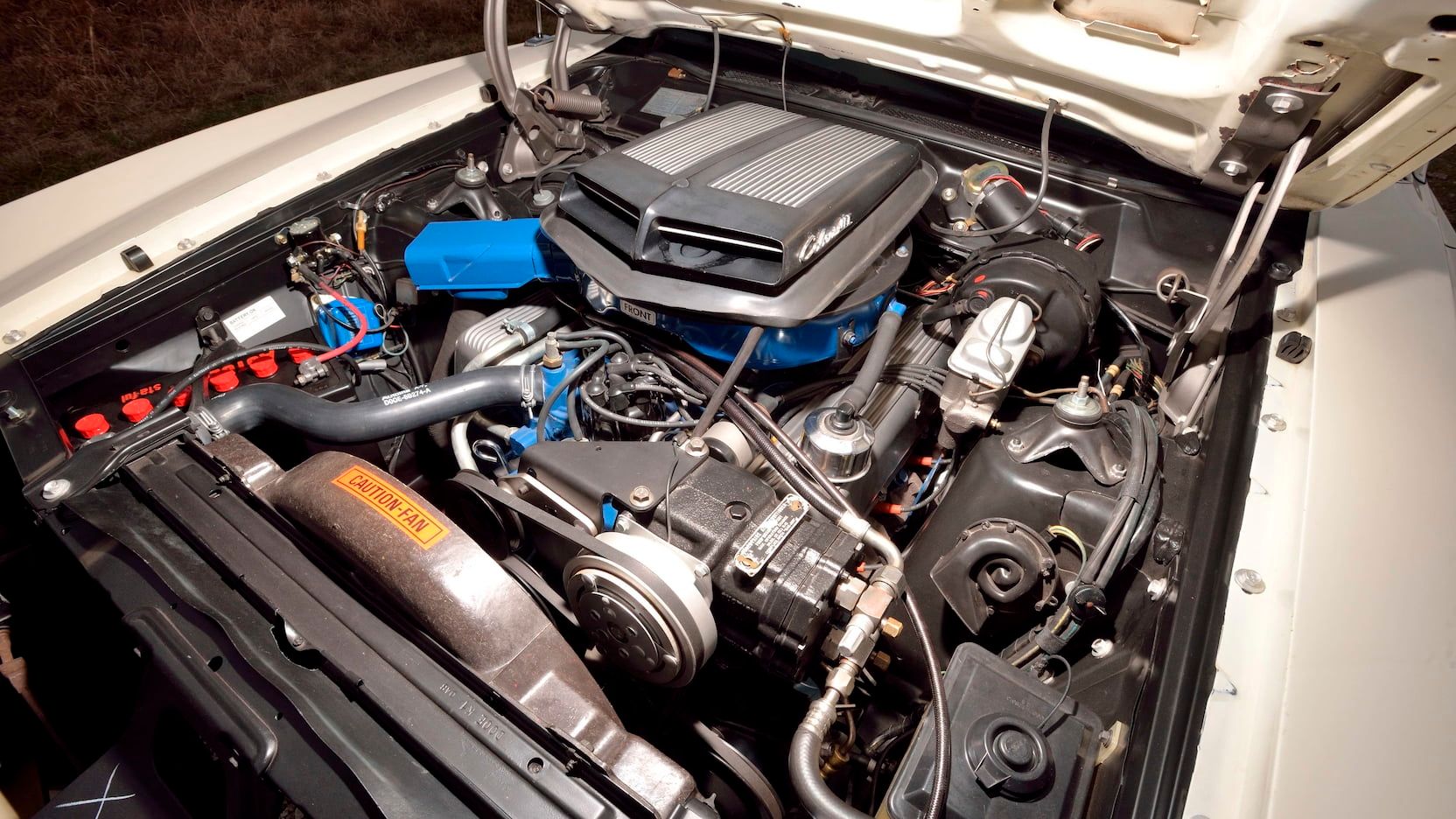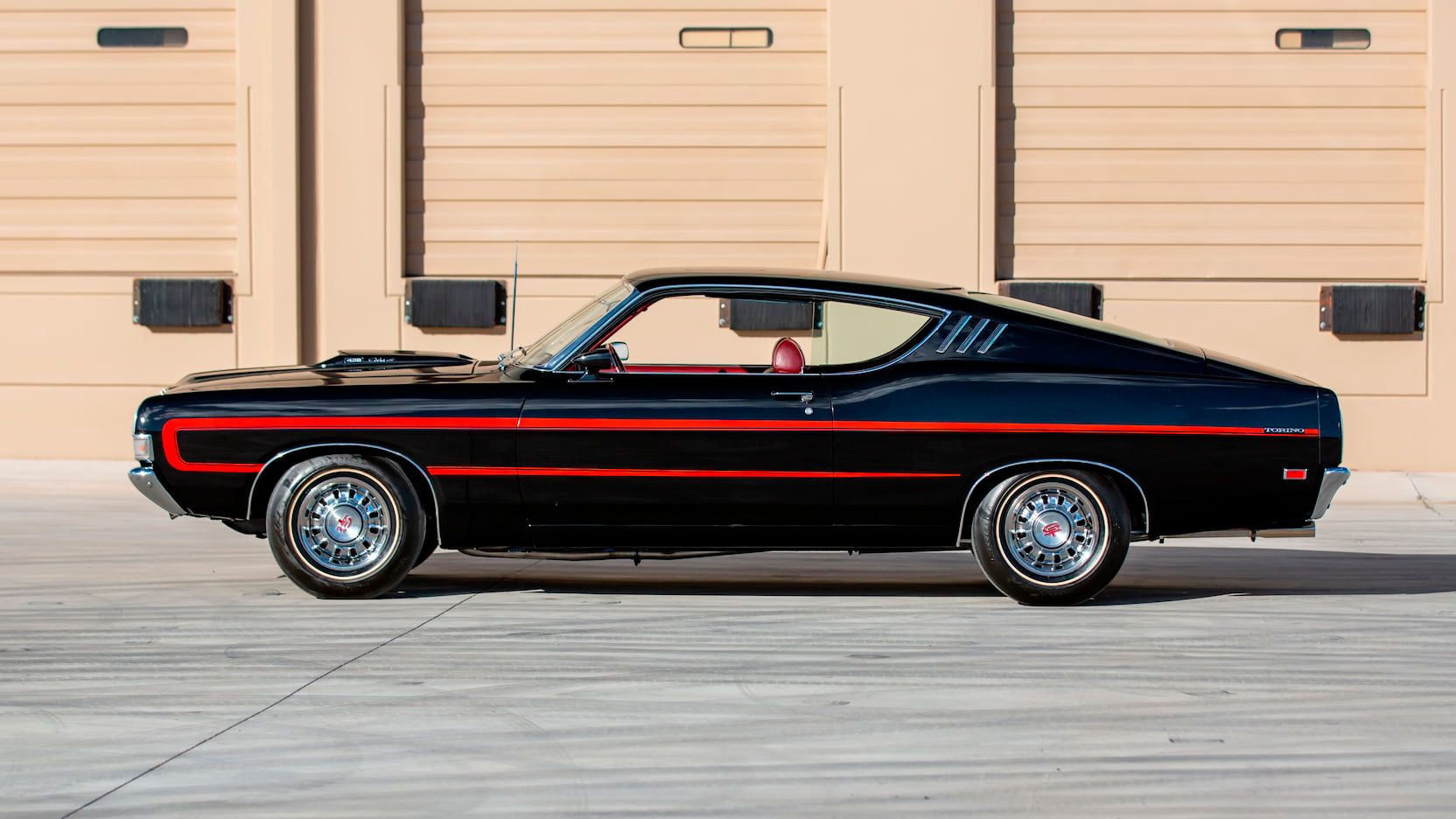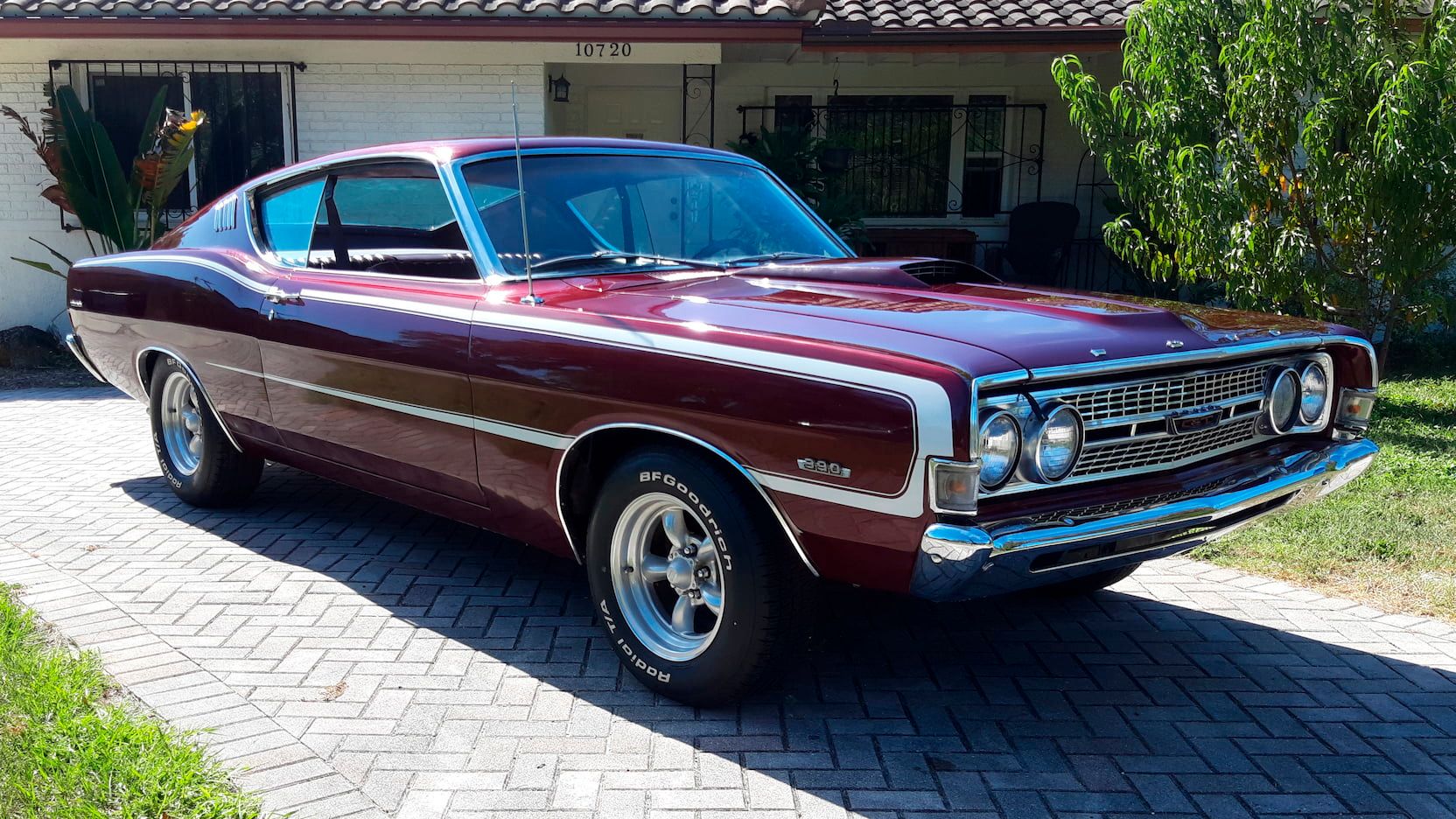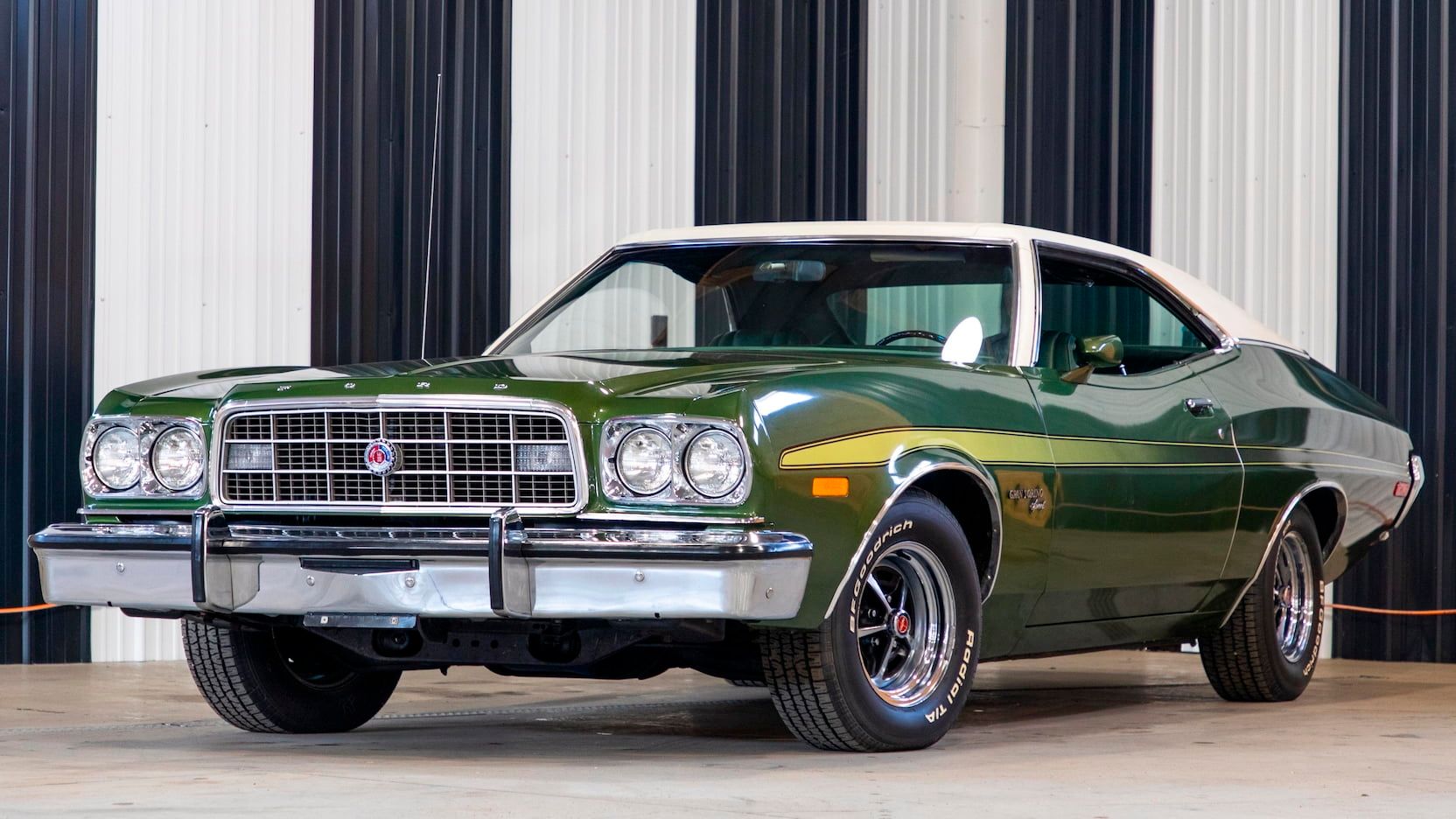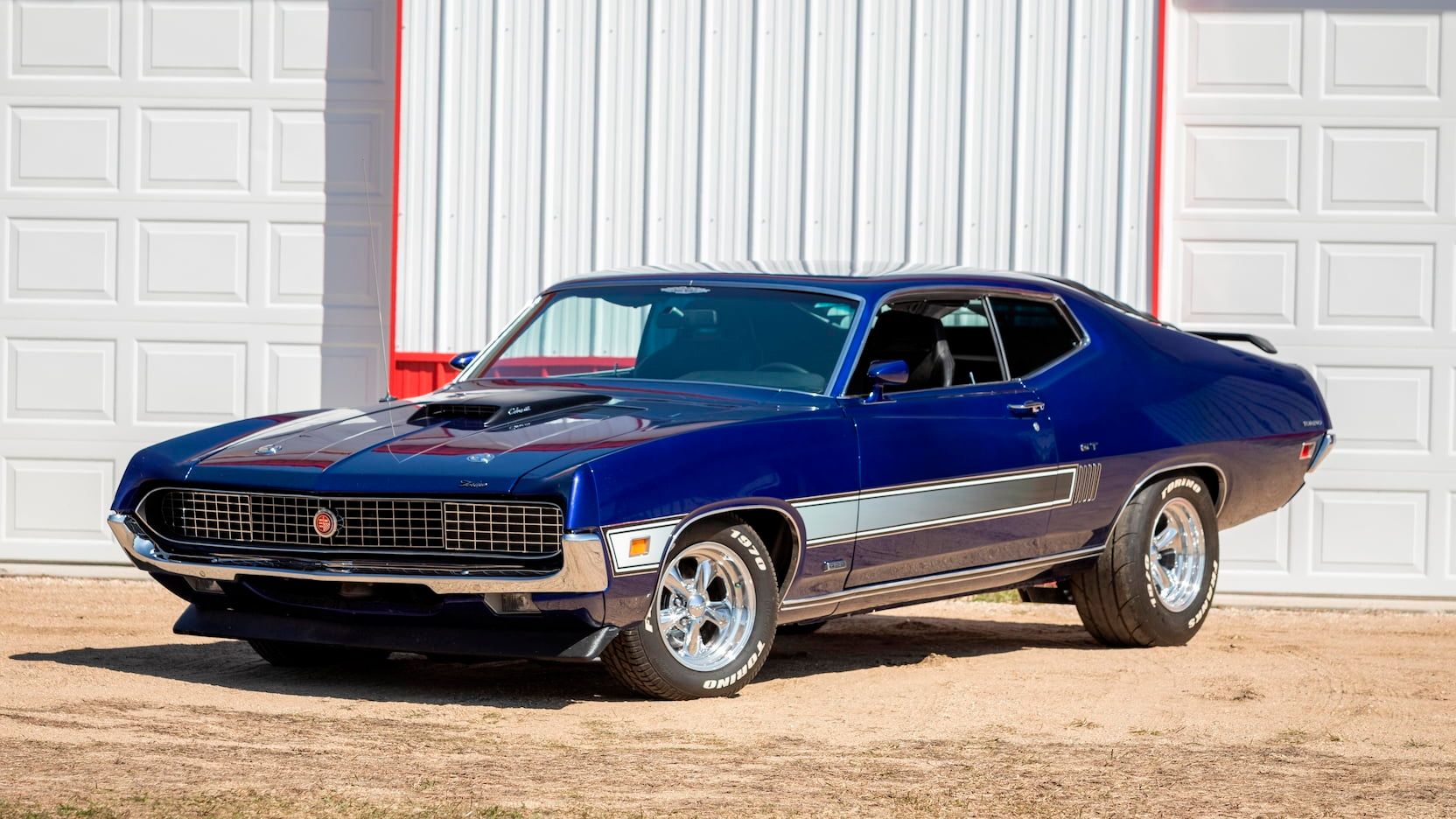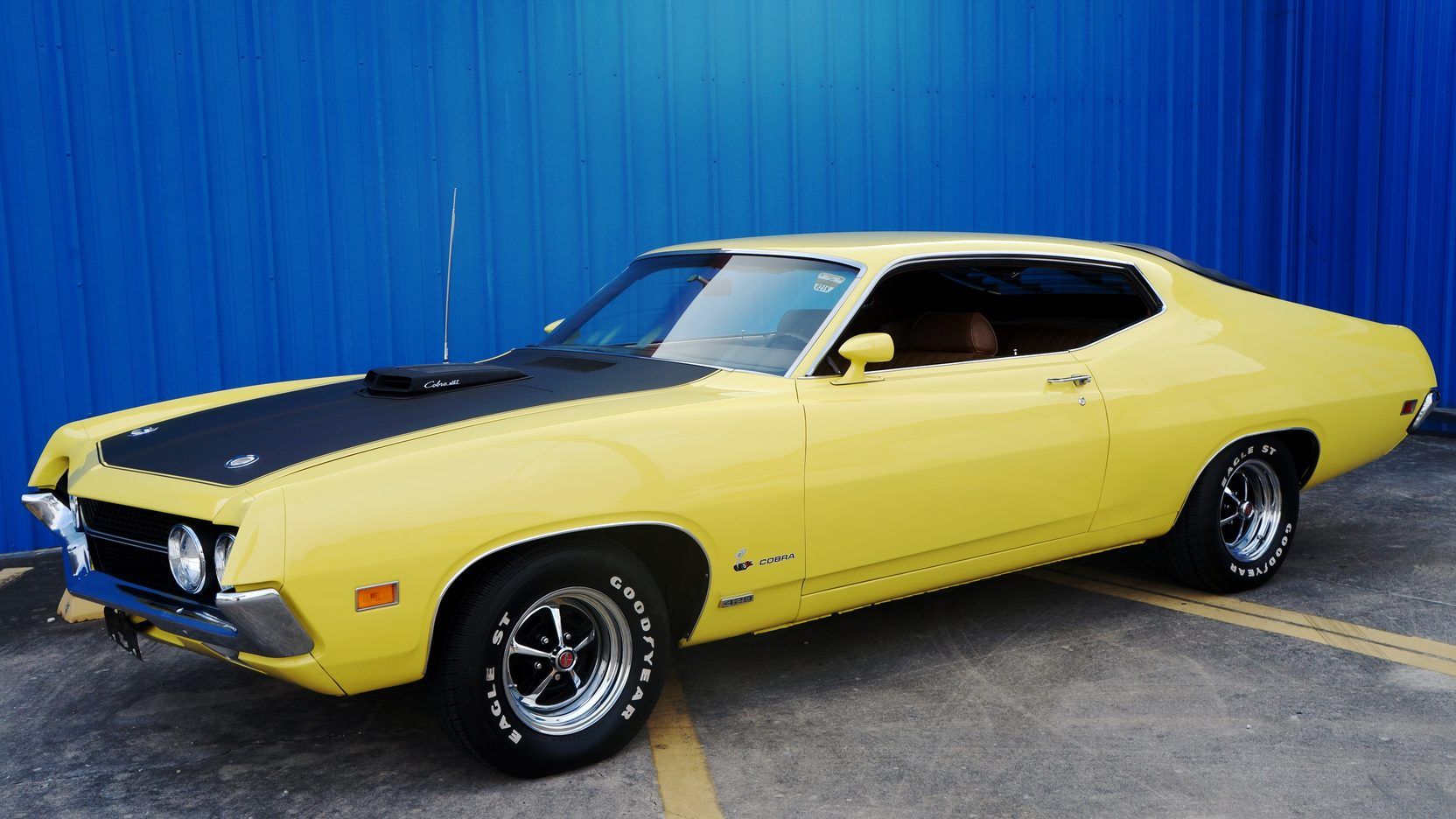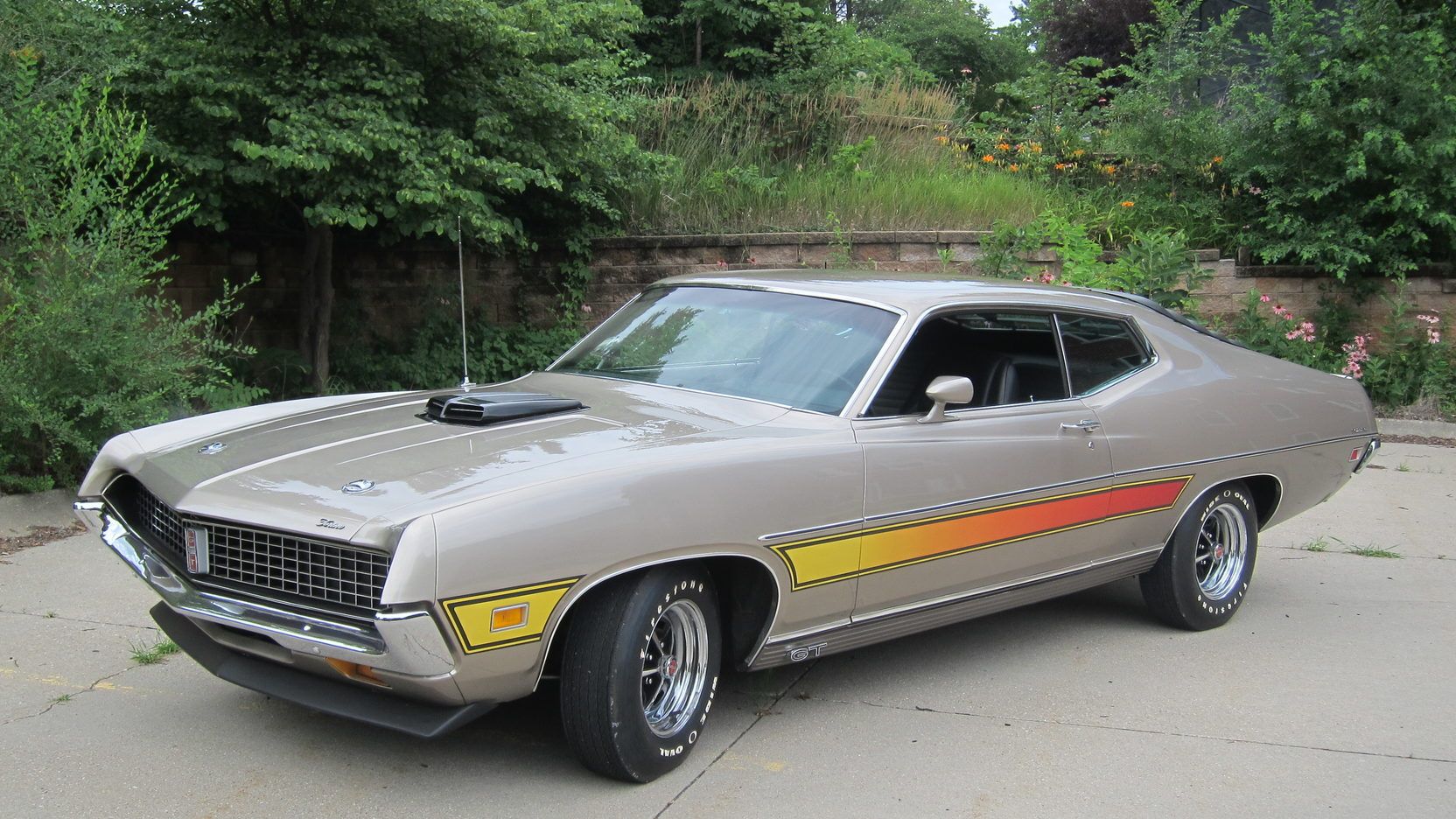1968 brought about Ford's surge of mid-sized muscle cars onto the market, with the Ford Torino being created as a top-level offering of the Ford Fairlane. Because of the popularity of the Torino, the Fairlane was discontinued in 1970, making it the only mid-sized option with luxury and muscle all wrapped up into one. Groups of people around the nation love this car, especially the one out of three generations that they prefer, but the point to them is simple; the Torino GT was a track-worthy Ford that was not a Mustang.
10 1970 Motor Trend Car Of The Year
Winning the Motor Trend Car Of The Year Award is not easy, but in 1970 The Ford Torino GT achieved it. The only way a car can get this prestigious award is to have advancement in vehicle design and excellence in the way that it was engineered, and it must be safe for the driver and occupants. Along with those three major things, the car must perform well for the type and class it was designed for and be fuel efficient. It must also be a value to the consumers that purchase it. It is not an easy distinction to get, so when a car is awarded this privilege, it truly is a one-of-a-kind car.
9 Base Ford For NASCAR
In 1968, the Torino was created as the base car for NASCAR with the Ford Racing Group. Since the Torino GT was a better all-around car for racing on the circuit, the Torino took over as the car for them to use. Throughout the nine years, this model was used, and the car and the driver had 27 race wins and 26 pole position placements. In '68 and '69, the Ford Torino took first place in the overall series, becoming the NASCAR champion for two years in a row.
8 NASCAR Official Pace Car In 1970
In 1970, along with being the base car for the NASCAR cup series race car, the Ford Torino GT was also the NASCAR official pace car. That means the car would lead the pack around the track during times of caution to ensure that they stayed organized. But, one of the most critical tasks that the pace car has is to lead the group of racers around the track before the race starts, setting the 55 mph speed, so each racer can set their pit track speeds. This prevents penalties while drivers enter and exit the pit areas, or at least it should.
7 Standard With 302, But Had Options
The base-level Ford Torino came off the production line with a small 3.3-liter six-cylinder engine, but luckily, the GT came with a 5.0-liter V-8. The 302 is arguably one of the most common engines used by small block muscle car builders because it is easy to work on and simple to get parts for. Those consumers who wanted more power and performance straight out of the gate could opt to have a car built with the 390 or the big block 427. Both engines boosted the power and torque of the vehicle without having to put any work into them.
6 1968 UAW Strike Forced The 289 To Be Standard
In 1968, something happened in history that many car lovers may not be aware of. Something that affected the Ford Torino GT in a way that confused the GT owners in 1968. One month after the Ford Torino GT went into production, a UAW strike occurred that ran for six weeks or so. This resulted in a temporary cost-cutting move that allowed the 289 V-8 to become the base engine placed into the car. However, the outer emblems were not replaced, so it is more than possible to obtain a Torino GT with a 289 under the hood but still have the 302 logos on the outer skin.
5 Not Just Muscle, But Performance Too
In the late '60s and early '70s, one of the most common trends the car industry saw was increased power. Straight line power for the ¼ mile-sanctioned drag strip or the closest drivers could find on their towns' highways or side streets. There were some vehicles designed more for performance, such as the Porsche and Datsun 280Z, but not many tried to combine the two. The Ford Torino GT did precisely that, paving the way for the cars of today that are performance muscle cars all wrapped up into one incredible vehicle.
4 Shift Towards Luxury in 1972
In the 1970s, the new emissions regulations began to take their bite out of the muscle car engines, creating cars that had no power and lacked performance because the horsepower of the engines started to drop. Looking ahead, the engineers at Ford built upon their original idea that the Ford Torino GT was designed for luxury in the first place. They shifted the car more towards the luxury side of things, away from the powerful monsters they had been producing in the past. This move by Ford prompted a vehicle with the name of a winner, but the feel of a top-end luxury car, helping them sustain sales throughout the year.
3 Non-Functional Hood Scoop, For The Most Part
One of the most appealing things about a muscle car, then and now, is the addition of a hood scoop. It made the car look mean, and if the competition didn't know any better, it made them think twice before challenging it to a race. The Ford Torino GT had such a hood, which was non-functional for the most part. However, a few cars were built with functional ram hoods, known as shaker hood scoops. These were designed to distribute air to the fuel system through a direct line into the air filter housing, giving the engine more power and less wasted fuel, meaning fewer emissions.
2 Available With A Cobra Jet
Every muscle car fanatic knows what the Cobra Jet engine is all about. It is one of the absolute most potent engines that Ford produced during the muscle and performance era. This engine was found in the Mustang for the most part, but it was available in other vehicles created by the car maker, such as the Ford Torino GT. The 429 Cobra Jet with Ram Air is stated to be able to accelerate from 0 to 100 in 6.7 seconds and could scream down the quarter-mile in under 14 seconds, reaching speeds of around 101 miles per hour.
1 "Ford's Brightest Idea"
When the designers came up with the idea of creating a new type of car in 1968, they called the Ford Torino “Ford’s Brightest Idea.” The idea behind the design was to replace the Fairlane, which was already a fairly popular model, to create a luxurious, more eye-appealing mid-sized car that still had power and performance. The truth is that throughout its existence, the Ford Torino GT never overtook the Ford Mustang's popularity or even any of its rivals, such as the Chevy Chevelle or Dodge Charger. So, in the eyes of consumers, the Torino GT was a great car but definitely not one of the car maker's best or brightest ideas.
FAQ
Q: What was the fastest Ford Torino?
Undoubtedly, the fastest of the Torino was the 1970 Ford Torino Cobra. The standard engine that came in this beast was a 429 Cobra Jet that could propel the car down the ¼ mile track in under 14 seconds, reaching speeds over 100 mph. It may not seem too impressive when looking at the track times today, but back in the late ‘60s and early ‘70s, that was almost fast enough to keep up with the likes of the Corvette, which could run the ¼ in just over 13 seconds. Depending on the driver, though, it is more than possible for Torino to be more than competitive against the best that the competitors have to offer.
Q: What engine came in the 1969 Ford Torino GT?
The base engine for many of the models in 1969, including the Ford Torino GT, was the 302. The 5.0-liter Ford engine is perhaps one of the most popular engines because they are so easy to work on, and aftermarket parts can be found almost anywhere. The small block motor may not have produced the most horsepower back in the days when that was all that mattered. However, the 302 Torino GT could hold its own on the track and still offer decent fuel efficiency.
Q: What does GT mean in Ford Torino GT?
The GT designation is a common one that stands for Grand Touring. It was first used by an Italian automaker and had a very specific definition. To be a GT, the car had to be able to perform when needed, but it must also be luxurious enough to crawl into and be embraced by the interior. Since the 1980s, though, the GT designation began to be overused so much that it has lost its meaning.
Q: Is the Ford Torino GT a muscle car?
The Ford Torino GT is one of those cars that has more than one designation. It was created to be a mid-sized muscle car with luxury. At first, the main focus was on creating a muscle car that could keep up with the likes of the Chevelle and Charger. When the emissions and safety rules began to increase, the luxury side of the vehicle continued to help sales. The GT also had some all-out muscle cars, such as the Cobra Jet cars, which were solely meant to appease muscle car lovers, but lucky for those owners, the luxury underlines were still present. So, the Ford Torino GT was a luxury muscle car.

